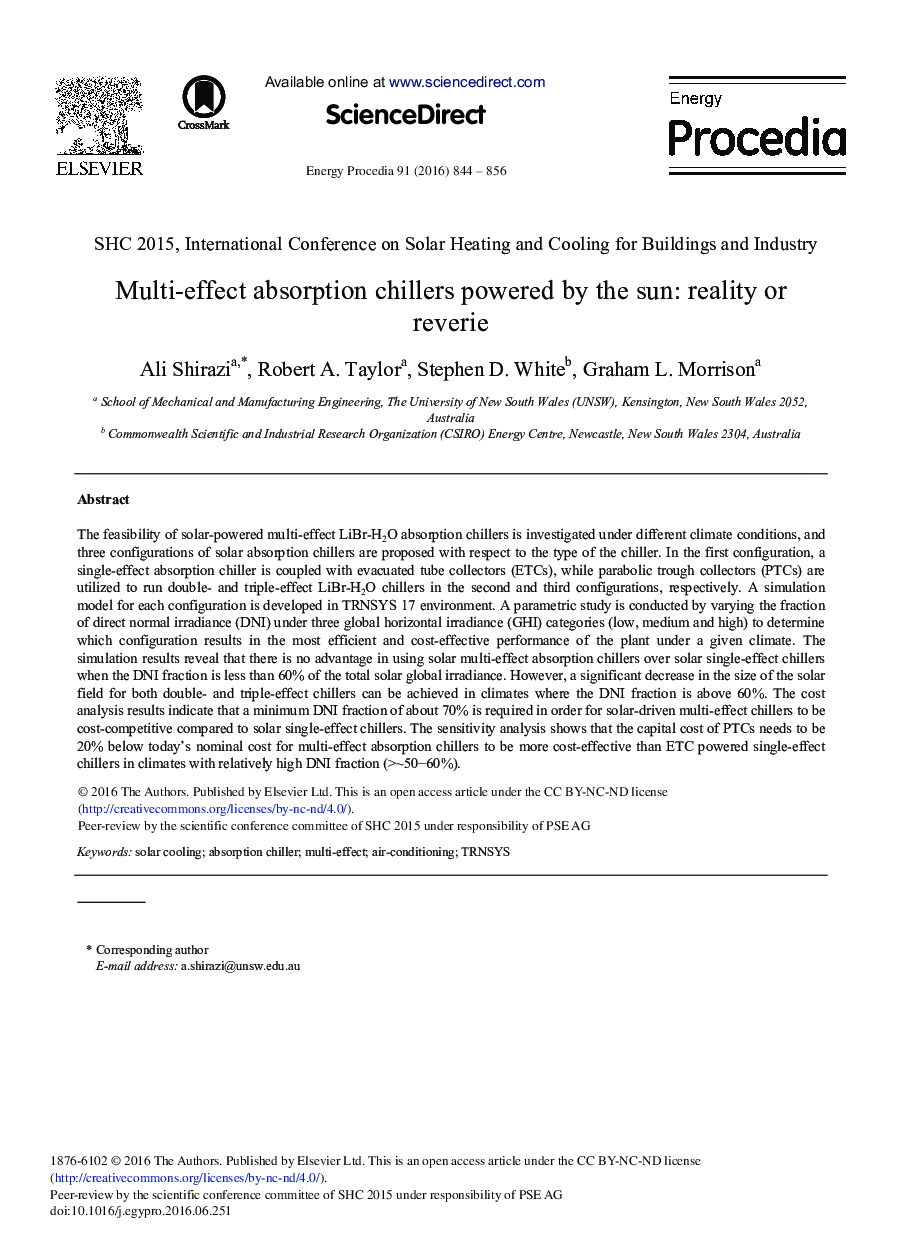| Article ID | Journal | Published Year | Pages | File Type |
|---|---|---|---|---|
| 1508718 | Energy Procedia | 2016 | 13 Pages |
The feasibility of solar-powered multi-effect LiBr-H2O absorption chillers is investigated under different climate conditions, and three configurations of solar absorption chillers are proposed with respect to the type of the chiller. In the first configuration, a single-effect absorption chiller is coupled with evacuated tube collectors (ETCs), while parabolic trough collectors (PTCs) are utilized to run double- and triple-effect LiBr-H2O chillers in the second and third configurations, respectively. A simulation model for each configuration is developed in TRNSYS 17 environment. A parametric study is conducted by varying the fraction of direct normal irradiance (DNI) under three global horizontal irradiance (GHI) categories (low, medium and high) to determine which configuration results in the most efficient and cost-effective performance of the plant under a given climate. The simulation results reveal that there is no advantage in using solar multi-effect absorption chillers over solar single-effect chillers when the DNI fraction is less than 60% of the total solar global irradiance. However, a significant decrease in the size of the solar field for both double- and triple-effect chillers can be achieved in climates where the DNI fraction is above 60%. The cost analysis results indicate that a minimum DNI fraction of about 70% is required in order for solar-driven multi-effect chillers to be cost-competitive compared to solar single-effect chillers. The sensitivity analysis shows that the capital cost of PTCs needs to be 20% below today's nominal cost for multi-effect absorption chillers to be more cost-effective than ETC powered single-effect chillers in climates with relatively high DNI fraction (>∼50–60%).
